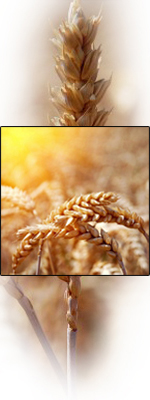England, France and Spain have all legalized low THC varieties of hemp for an agricultural crop. England planted 1,500 acres of hemp as a first year crop. Reports from England state that farmers are receiving in excess of 3,000$ per acre for their hemp crop.
Low THC hemp is not suitable as a psychoactive drug.
A Canadian report from the late 1800's demonstrated that hemp works very well in rotation with bean and corn crops.
In 1991 Ontario farmers receiver 290$ and 240$ per acre for grain corn and soya bean respectively.
Hemp was grown successfully in Canada for over 100 years. For a period in the late 1800's Canada produced 'hi: of all England's hemp requirements. At kite time, England was the largest hemp consumer in the world.
In the 1930's, a South Western Ontario newspaper reported that Canadian grown hemp was among the best in the world and far superior to tropical hemp.
In Canada hemp can be grown successfully from our southern borders to approximately 60O North Latitude, the parallel that divides the North West Territories from the provinces. This remarkable range is possible due to hemp's short growing season, usually 90 to 110 days.
The hemp plant will reach a height of up to 5m (16ft.) and sink a main tap root down 1 ft. This tap root will draw nutrients from deep in the soil and make them available to subsequent crops when the hemp leaves are shed on the soil. This extensive root system also helps to alleviate the problem of soil compaction.
Hemp is very easy on the soil and returns up to 60% of the nutrients it takes from the soil, when dried in the field.

A report from Kentucky states that hemp was grown on the same land for 14 consecutive years without soil depletion or reduction in yield.
Hemp is very economical crop to grow since it requires virtually no pesticide applications.
Hemp is also relatively drought-resistant and has been relied upon several times during drought-induced famine for its high protein seed.
Hemp is very resistant to increased UV radiation and should not suffer decreased yields, unlike soya bean and corn.
Hemp grown for the production of biomass fuels can provide all of our gas, oil and coal energy needs and end dependency on fossil fuels.
Hemp results in a 95.5% fuel-to-feed ratio when used for pyrolysis the thermochemical process that converts organic matter into fuel.
Biomass has heating value of up to 8,000 BTU/lb., with virtually no residual sulphur or ash during combustion.
Biomass fuels offer a clean alternative to fossil fuels. No sulphur oxides are released, either during pyrolysis or combustion. A closed CO2 system is created. According to Stanley Manahan, ?Environmental Chemistry ?, biomass fuels would not result in any net CO2 being added to the atmosphere.

Hemp is the #1 producer of biomass per acre in the world. Biomass energy expert Lynn Osburn estimates that 1 1/2 to 3 1/2 million acres of hemp would replace all of Canada's fossil fuel demands.
From 75%/O to 90% of all paper was made with hemp fiber until the late 1800's.
U.S.D.A. bulletin #404 outlined a process for the production of paper using pulp and demonstrated that hemp could replace 40% to 70% of all tree pulp paper, including corrugated boxes, computer paper and paper bag.
An acre of hemp will produce as much pulp for paper as 4,1 acres of trees over a 20 year period.
The hemp paper-making process requires no dioxin-producing chlorine bleach and uses 75% to 85% less sulphur-based acid.
Hemp paper is suitable for recycle use 7 to 8 times, compared with 3 times for wood pulp paper.
By utilizing hemp pulp for paper, we could stop the deforestation of our country and produce stronger, more environmentally sound paper for less than 3/: of the price of wood pulp paper. The paper mills now in place would need almost no conversion in order to switch from wood to hemp pulp.
Hemp produces the strongest, most durable natural soft-fiber on earth. Until the 1 820's, up to 80% of all textiles and fabrics for clothes, canvas, linens and cordage were made principally from hemp.

Hemp cloth is stronger, more durable, warmer and more absorbent than cotton. Best of all. ' grown in Canada, cotton cannot.
An acre of land will produce 2 to 3 times as much fiber as cotton, about 1,000 Ibs. of fiber per acre.
Hemp grown in most parts of Canada will require no herbicide, fungicide or insecticide applications. Up to ? of all agricultural pesticides used in North America are applied to the cotton crop.
Natural, organic hemp fiber breathes and is recyclable, unlike petroleum-based synthetic fibers.
A fully mature hemp plant may contain 1/2 of its dry-weight in seed.
Hemp seed has an oil content of 34 % more than any other seed. Hemp seed oil is second only to whale oils in its quality and has the same burning qualities and viscosity as #2 grade heating oil without any of the sulphur-based pollutants.
Once hemp seed oil has been extracted, the remaining seed cake is second only to soya bean for protein content and is an excellent source of nutrition for either farm animals or humans.


